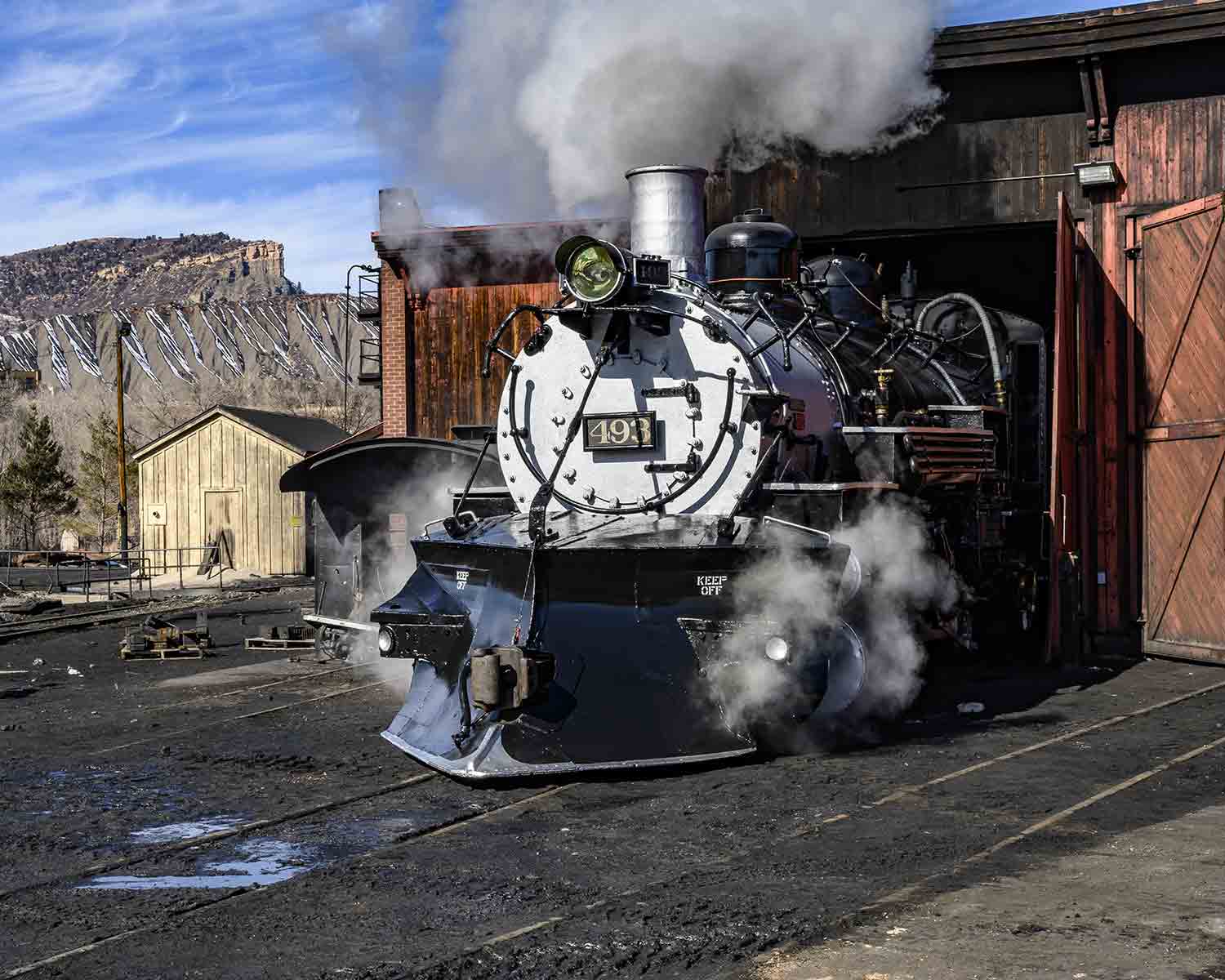
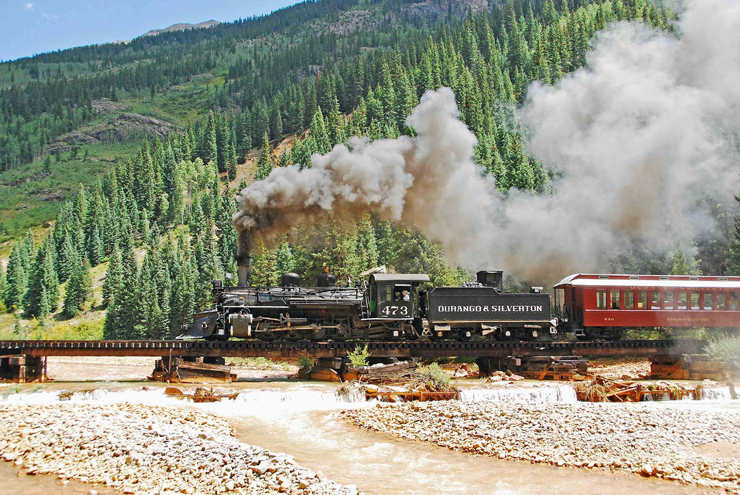
DURANGO, Colo. — Just days after releasing a newly restored K-37 2-8-2 locomotive that has been converted to burn oil instead of coal, shop crews at the Durango & Silverton Narrow Gauge Railroad are starting to convert another 3-foot gauge steam locomotive.
On Jan. 24, the D&SNG fired up No. 493, one of the largest types of locomotive ever built for the Denver & Rio Grande Western’s famed narrow-gauge operation, following an extensive overhaul [See: “Durango & Silverton completes restoration, conversion of K-37 locomotive,” Trains News Wire, Jan. 27, 2020]. Since then, the railroad has been testing the locomotive and on Tuesday it hauled a 13-car passenger train in one of its biggest challenges yet. D&SNG General Manager Jeff Johnson tells Trains News Wire that the locomotive has performed flawlessly.
“The initial test runs for No. 493 have gone well so far, with no glaring issues or additional repairs needed,” he says. “With each subsequent test run, the crew will let No. 493 run a further distance up the line, and with increased speed.”
The locomotive is expected to make its public debut on Feb. 15-16 during the railroad’s annual winter photography weekend.
The restoration of No. 493 now gives the D&SNG seven operating 2-8-2s, making it home to the largest regularly operational fleet of steam locomotives in North America.
No. 493 last ran in 1968 and in recent years had been on display in Silverton. The D&SNG decided to convert one of its former Rio Grande Mikados from coal to oil following a wildfire that closed the railroad for more than a month in 2018 [See: “Durango & Silverton looks to oil firing, diesels,” Trains News Wire, July 13, 2018].
D&SNGRR Chief Mechanical Officer Randy Babcock says the conversion put his shop team to the test but that in the end, they succeeded.
“In addition to the extensive restoration time expected for completely rebuilding a deteriorated locomotive and tender which had not operated in over 50 years, No. 493’s restoration was unique because of all the additional design, engineering, and fabrication time needed to complete the engine’s transformation,” Babcock says. “For example, the locomotive’s conversion from coal- to oil-fueled motive power required numerous original designs and drawings to facilitate the fabrication and machining of new parts.”
The shop team will be putting those same techniques to use when it converts another locomotive, K-28 No. 473, to burn oil. Johnson tells Trains News Wire that the locomotive was selected because it was already slated to have significant firebox work this year and because the railroad has access to blueprints of the Oahu Railway Land & Transportation Company’s oil-burning 2-8-2s, which were nearly identical to the Rio Grande’s K-28s. The blueprints mean the railroad will not have to create oil-burning apparatuses from scratch. Johnson says the locomotive will likely enter service in 2020.
“The D&SNGRR is currently assessing and developing a long-term strategic outlook for its current and future motive power plans and accompanying operations,” he says. “At the present time, and for the foreseeable future, the railroad will utilize its entire fleet of locomotives, including coal-burning and oil-fired (steam locomotives) and diesel engines, to transport passengers on a broad range of excursions and special events throughout the year. This approach gives the company much-needed operational depth for greater engine scheduling and maintenance flexibility.”
In 2018, the railroad announced that it was also purchasing two diesel locomotives from Motive Power & Equipment Solutions, Inc. that could be used on its 45-mile excursions to Silverton particularly when the danger for wildfire is high. Officials tell Trains News Wire that the construction of those locomotives has been delayed but that they will likely arrive on the property in 2020.
— Updated Feb. 5 at 11 a.m. with more information and updated timeline for conversion of No. 473.






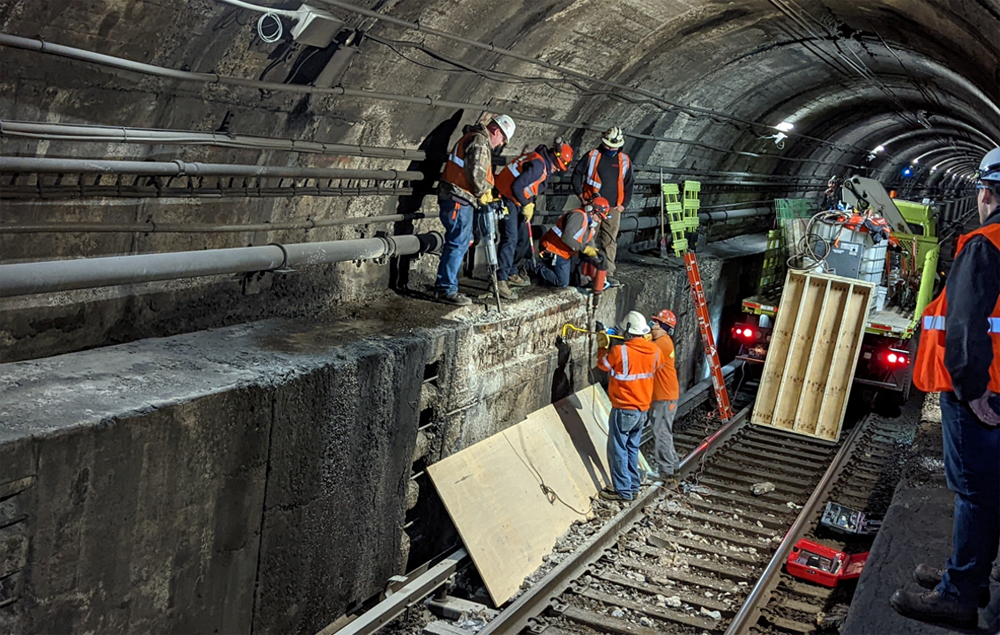

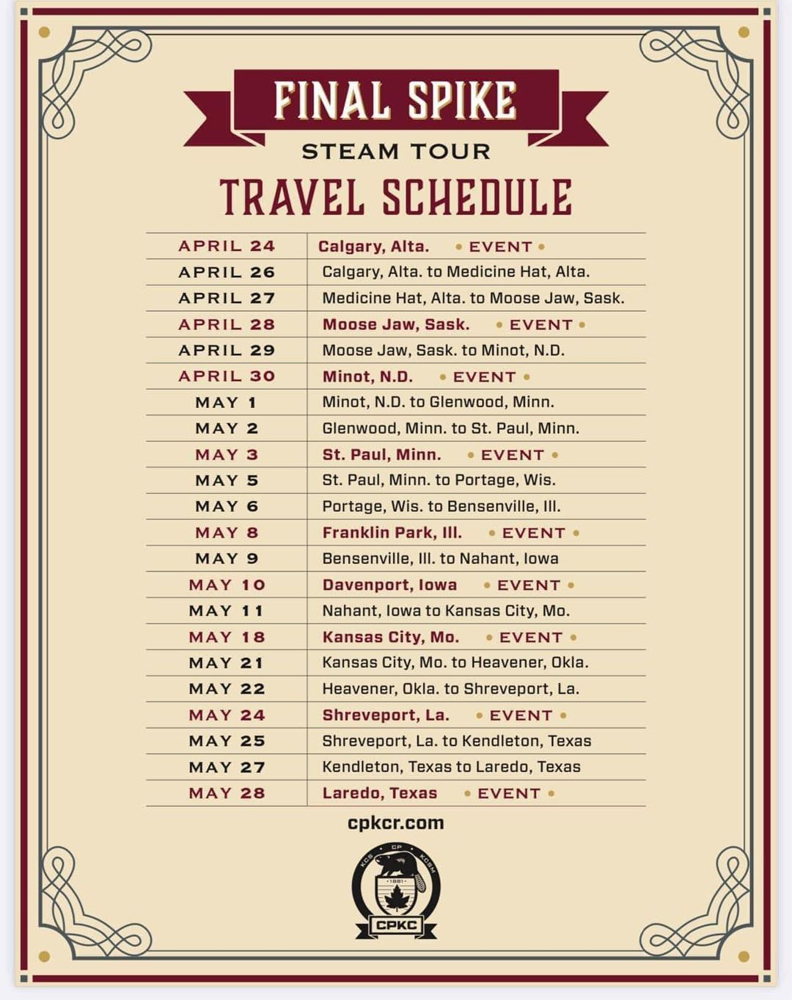
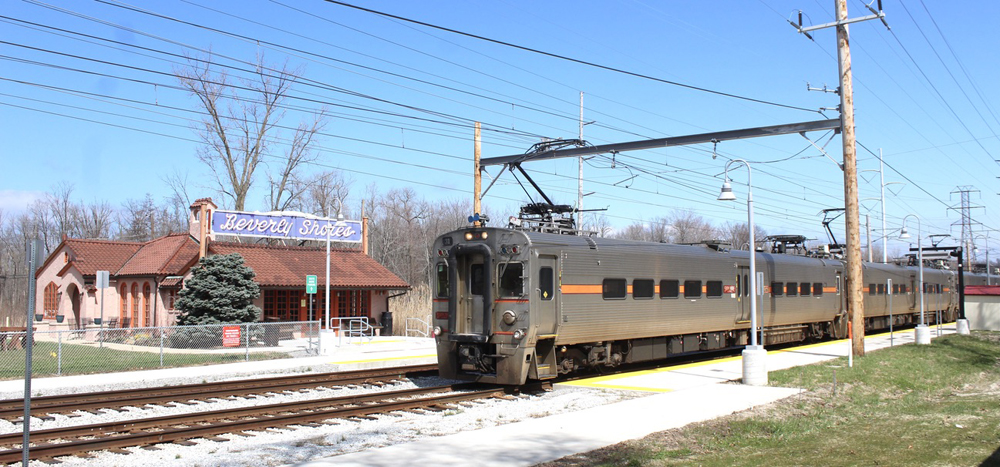




Nuclear power could also be used to generate steam. The reactor would be housed in the tender where coal or logs were formerly stored. Water would be in the U-shaped reservoir lining the rear and side perimeter of the tender as always. [Northern 4-8-4s would handily house nuclear reactors in their tenders.]
Granted, there had been apprehension about nuclear fallout in the past. But, with global warming and advanced technology to make nuclear energy safe, nuclear power may become an attractive energy source for trains.
I’ve heard wood pellets as an alternative for when coal and oil are no longer options. Going full circle.
Ms. Vinson:
If only, and I wish it were that easy.
The problem is not the reactor itself. I can design a core small enough to fit in the coal storage of the tender, and it would have enough specific output to do the job. If you allow me high enrichment fuel I can give a fast enough response to mimic the throttle response of a coal fired steam engine.
The problem comes in several parts. First, there is energy recovery. A locomotive steam engine is an open loop system, which means the water passes through the machine exactly one time. Efforts to build a closed loop locomotive have been made, but without notable success. This obviates a boiling water design, because the water in its trip through the core will be contaminated and therefore cannot be discharged in the classic locomotive manner.
So now we need a primary loop, either molten metal (if a fast reactor) or pressurized water (if a water moderated reactor), and of the two probably the fast reactor has the highest specific power density. Steam, we can then generate in a secondary loop but it will be saturated steam, not superheated steam. So in order to mimic the thermal transfer characteristics of superheated steam at 200 PSI we will need wet steam at perhaps 700 PSI. Tthat is not what you want in a reciprocating steam engine.
Then there are the two killers. The first is shieldiing. All the nuclear components must be shielded to the point where it meets safety specifications. This means that your average rabid railfan, leaning against the reactor shield for one continuous year without break can receive a dose of only 100 mR. This is too much mass (and too much weight) to be practical.
The second is decay heat. Even when the poles are in the holes (as they say) the reactor is generating decay heat. True, the generation rate drops as a decaying exponential – but you still have to get rid of it. This means you always have to have a heat sink. You cannot simply shut the thing off and go have a beer.
The cardinal rule when playing with a nuclear reactor is, and I quote: “Never EVER lose your link to the heat sink.”.
Much as I would like to see nuclear steam, it isn’t really practical. I would very much like to see commercial seagoing reactors, the Russians are building some designs and they work, but I don’t think it is the answer for railroads. Alas.
The above comments are cynical in nature and do not form the basis for an attorney/client relationship. They do not constitute legal advice. I am not your attorney. Vhat goot iss der mad science if nobody gets hurt? You’re not mad scientistis, you’re just a bunch of hippies!
#theyweregreen
Wonderful news. We could just as easily be reading that they are buying diesels.
473 burning oil. I remember when … but oh well, it’s a different world than it was then.
I wonder if they are going to try and use used cooking oil for fuel, I think the Grand Canyon Railway did this.
This is wonderful news. I’m really glad they’re doing this. Climate change is only going to make things drier so avoiding cinders is all to the good.
Clearly this operator takes their responsibility seriously when it comes to the surrounding environment with regards to ash fires.
Until someone comes up with a EV that can also heat a boiler to spew decorative steam out of a stack and blow a horn for effect, this is a good response.